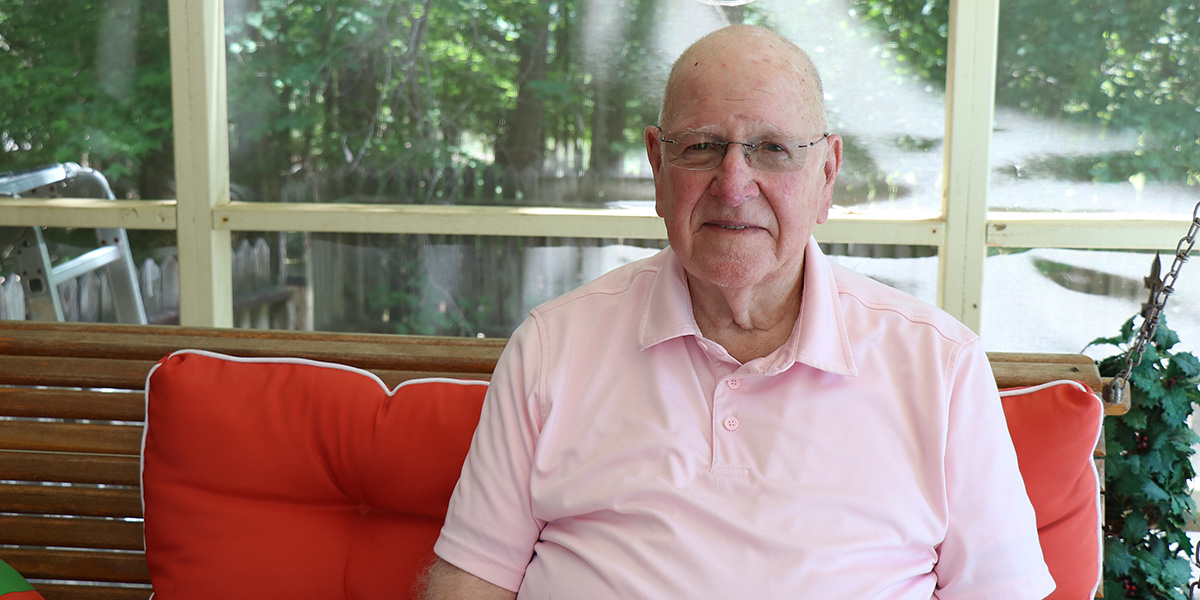
Watchman wins the fight
For many heart and stroke patients, blood-thinning medicines are lifesaving but life-limiting.
But a new procedure called Watchman can help. It helped patient John L. Kirkley Jr., 77.
Kirkley, a retired plastics engineer, was taking blood-thinning medicines to prevent blood clots.
These medicines help by keeping the blood thin enough to prevent clots that could cause a heart attack or stroke. But, they also keep many patients from leading full and normal lives because they fear excessive bleeding. For them, any minor cut — such as a nick during a morning shave or finger slice while cooking — could become a major issue.
The blood thinners were causing excessive bleeding for Kirkley. He had four hemorrhages because of the blood-thinning medications, and the most recent one caused him to lose a lot of sight in his left eye.
“That last one hurt my vision terribly,” Kirkley said.
Another reason he was anxious to get off the medicines: the dark purple and delicate spots on his skin caused by blood thinners.
“If you just rub those spots, they bleed,” he said.
Kirkley spent a lot of time trying to avoid doing anything that might cause a cut or bruise.
Watchman to the rescue
Until recently, the preferred treatment for patients like Kirkley was to take the blood thinning medication for life. But, thanks to recent advancements in treating conditions like Kirkley, he was introduced to the Watchman implant procedure.
This catheterization process delivers a blocking implant (about one-inch-wide) to the left side of the heart. With Watchman, clots can't form.
Kirkley became Spartanburg Regional Heart Center's first patient to receive the Watchman implant on March 28, 2018.
One year later, Kirkley is on a mild blood thinner and is scheduled to discontinue it soon.
“I feel great,” he said. “I don't bleed nearly as bad as I used to and I don't have the dark spots anymore.”
Watchman and atrial fibrillation
Many patients take blood thinners because they have atrial fibrillation (AFib). Their heart quivers or beats irregularly, which can lead to blood clots, strokes and heart attacks.
A person with AFib is five times more likely to suffer a stroke than someone with a regular heartbeat. One of the body's major contributors to AFib is the left atrial appendage, which is a protruding sac on the left side of the heart. When the left atrial appendage functions poorly, it often collects blood and forms clots that can escape into the bloodstream and cause strokes. About 90 percent of the stroke-causing blood clots that come from the heart are formed in the left atrial appendage.
Not long ago, the preferred treatment was to prescribe blood thinners that prevent blood clots. This is normally a lifetime commitment to taking medicine.
Now, with Watchman, the atrial appendage can be blocked off to keep the clots from forming in the first place.
Candidates for Watchman
If a patient is taking blood thinners to prevent blood clots in the atrial appendage, he or she should ask their doctor about Watchman as a solution to the problem.
Candidates for Watchman are referred to Spartanburg Regional's Heart Center for evaluation by a team of specialists.
Along with a physical examination, a Transesophageal Echocardiogram (TEE) is a scope used and inserted down the throat. It takes pictures of the heart, checks for any existing blood clots and evaluates the size of the atrial appendage. This outpatient procedure is usually done with conscious sedation and/or localized numbing medicine. In order to have this procedure, patients have to have atrial fibrillation, a history of bleeding such as GI bleeds or stroke, high risk for falls, cognitive impairment, and difficulty with maintaining anticoagulants.
During the Watchman procedure
- Patient is put under with general anesthesia.
- A small cut is made in the upper leg, which gives the surgeon access to the femoral artery that leads to the heart.
- The Watchman is attached to a catheter and threaded through the body to the heart.
- The implant is placed over the entrance of the appendage and blocks it.
- Once the Watchman is in place, the catheter is removed and the small leg opening is closed.
- The procedure usually takes about one hour.
After the procedure
The procedure normally requires a single overnight hospital stay for observation, and patients can expect to go home the next day. Patients should take it easy for a few days before returning to work and pace themselves as they get more active.
Patients put away the blood thinners
Nine out of 10 patients can stop taking blood thinners 45 days after the implant. After one year, 99 out of 100 patients no longer need blood thinners.
“This is one of the quicker structural heart procedures that we perform,” said Kim Valenti, NP, structural heart program coordinator. “Successful patients usually get back on their feet fairly quickly. Best of all, they can usually stop taking blood thinners and stop worrying about getting any small cut that could turn into to something more serious.”
For more information about Structural Heart Services available at Spartanburg Regional Heart Center, please contact 864-560-8133.
AFib symptoms
As with any heart-related problem, see your doctor if you think you have a problem with AFib or the blood thinning medicines that are usually prescribed to treat it. Some of your symptoms may include:
- Palpitations (you might feel your heart racing or beating irregularly)
- General overall body weakness
- Inability to exercise
- Fatigue and tired for no good reason
- Lightheadedness, dizziness and/or confusion
- Shortness of breath
- Chest pain
- Excessive bleeding caused by blood thinners










